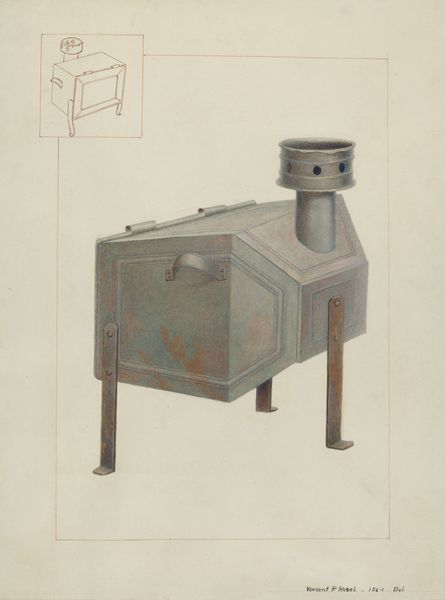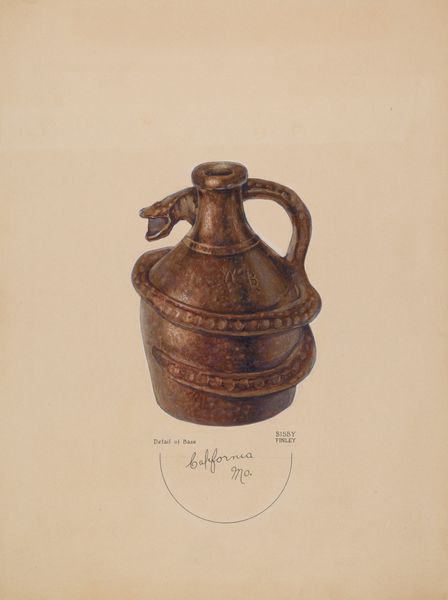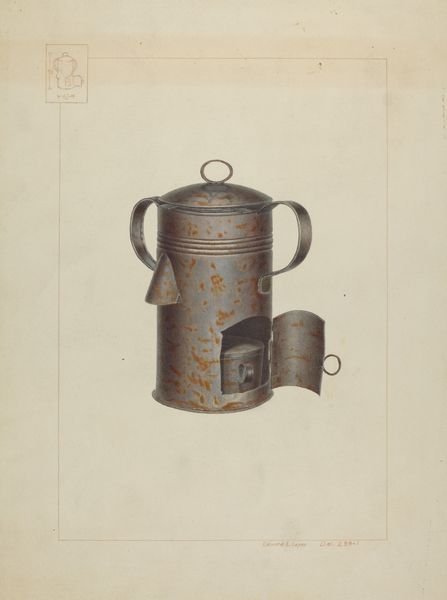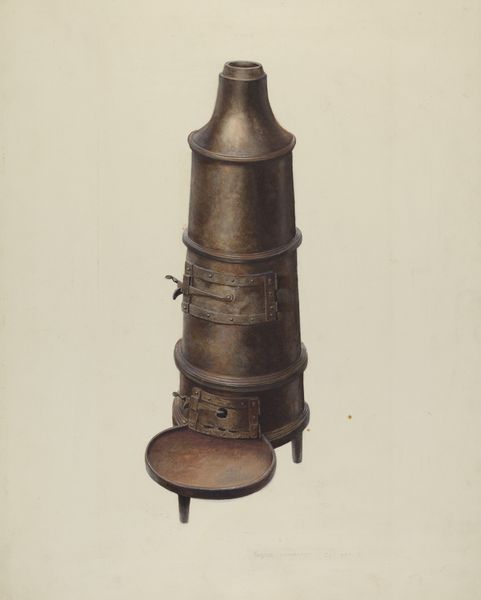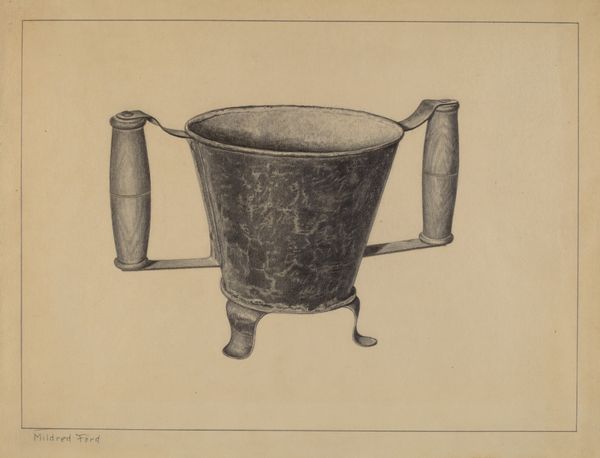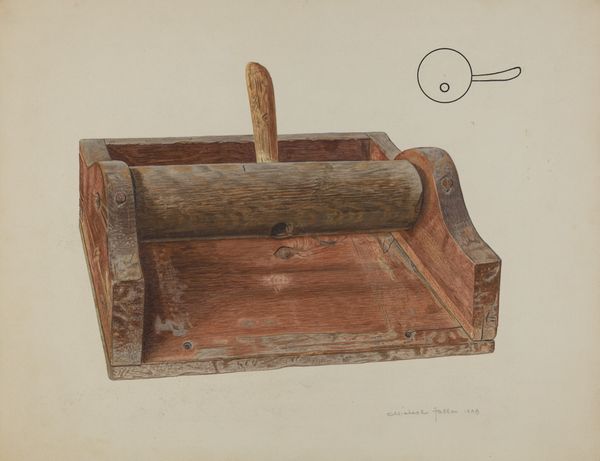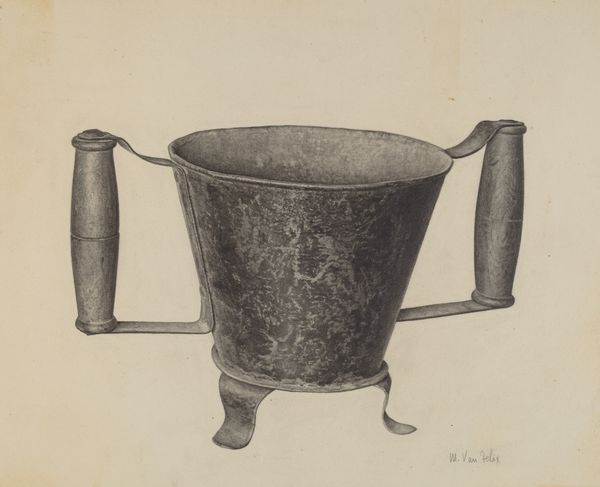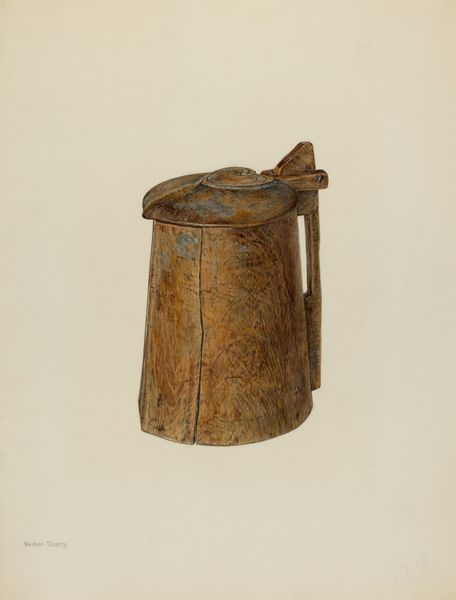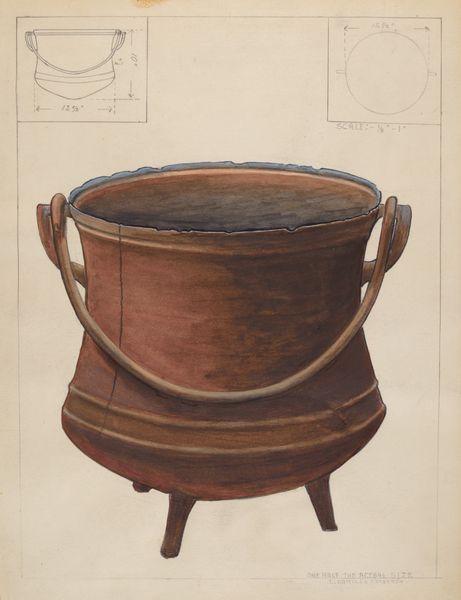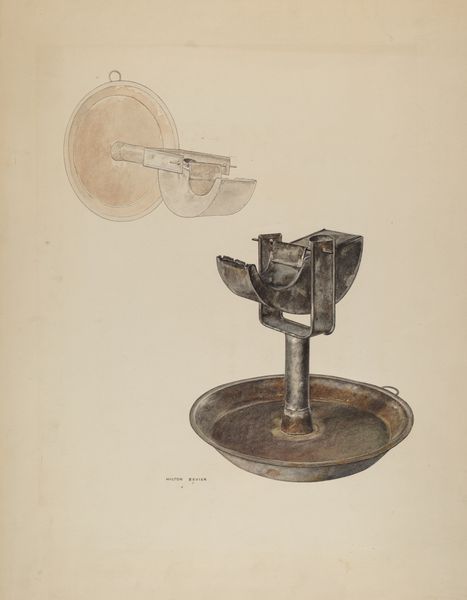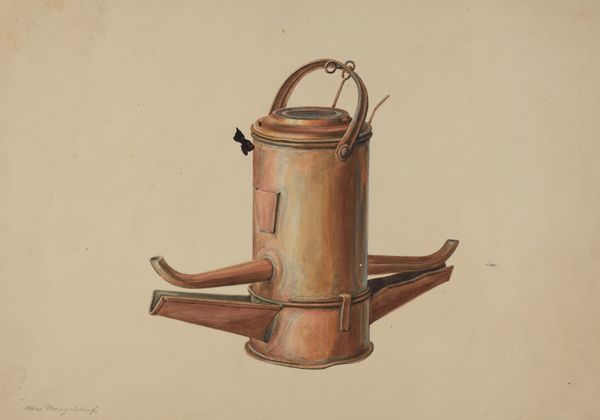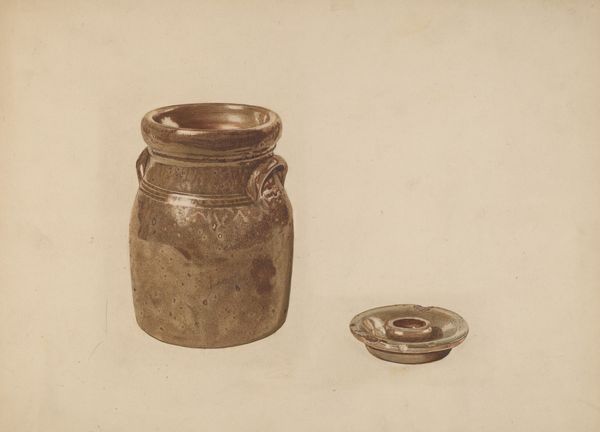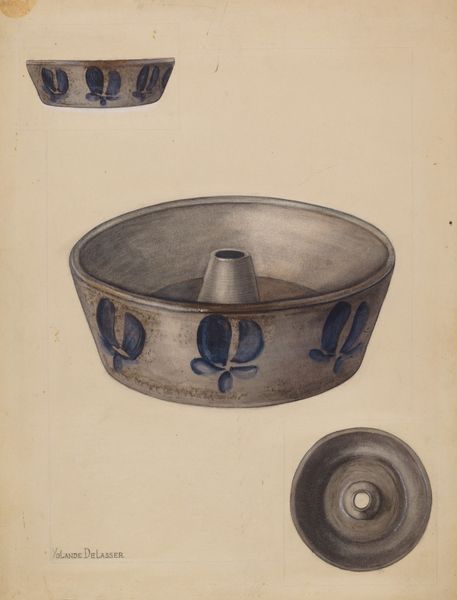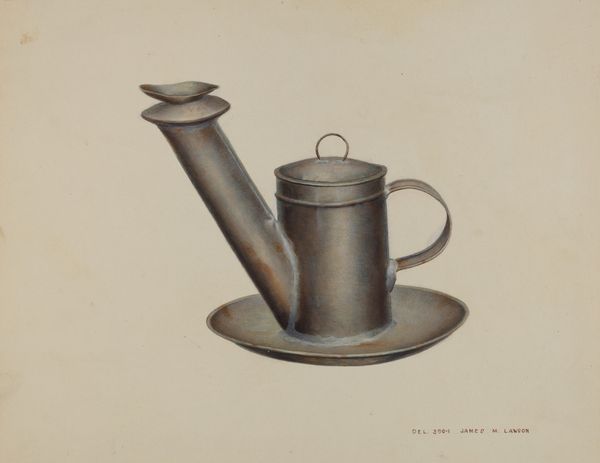
drawing, watercolor
#
drawing
#
charcoal drawing
#
oil painting
#
watercolor
#
watercolour illustration
#
watercolor
Dimensions: overall: 28.2 x 35.7 cm (11 1/8 x 14 1/16 in.)
Copyright: National Gallery of Art: CC0 1.0
Curator: We're looking at Samuel Faigin's circa 1942 piece, "Kerosene Lamp Heater", rendered primarily in watercolor. It feels incredibly poignant; that depiction of age and rust. Editor: Poignant, yes, but I see it formally first. The composition utilizes a triadic arrangement, repeating circular and cylindrical forms across the three renderings of the lamp and heater. The somber, muted color palette further unifies the pictorial space. Curator: I’m struck by the medium itself. Watercolor lends a certain ephemerality, juxtaposed here against something as utilitarian as a heater. I'm thinking of the labor conditions of wartime manufacturing... were these commonplace objects? Who used them? Editor: Utility, precisely, is one of its central qualities, evident even without its immediate social context. Notice how the artist's subtle gradations in tone emphasize the heater’s volume and weight. The faint, schematic line drawing above acts as a kind of diagram, almost anticipating mass production. Curator: That's a compelling reading! Considering the date, right in the middle of the Second World War, this lamp heater gains even greater weight. Rationing, scarcity... people reliant on these for survival in their homes. Were these made on the homefront or deployed? Editor: What I find most interesting about this, in your terms, is the artist’s emphasis on rendering material presence through visible strokes and selective detail. Faigin carefully constructs the surfaces of metal, illustrating deterioration of material itself to evoke memory of form and structure over function. Curator: Perhaps, but this tension highlights the essence of material culture; where objects gain significance through their role in lived experience and how these trace evidence of the people and spaces which it once occupied. Editor: Very well, it is about function, ultimately transformed here by those deliberate stylistic choices into a kind of elegy, one which brings into relief certain cultural forces. Curator: I leave more moved and also newly cognizant of those people that occupied those homes, now having witnessed an era where an artifact had an increased, more immediate importance for home and heart. Editor: Indeed. A fascinating piece that complicates what is inside versus the larger exterior sphere; it renders visible a historical shift in functional design within the theater of war.
Comments
No comments
Be the first to comment and join the conversation on the ultimate creative platform.
